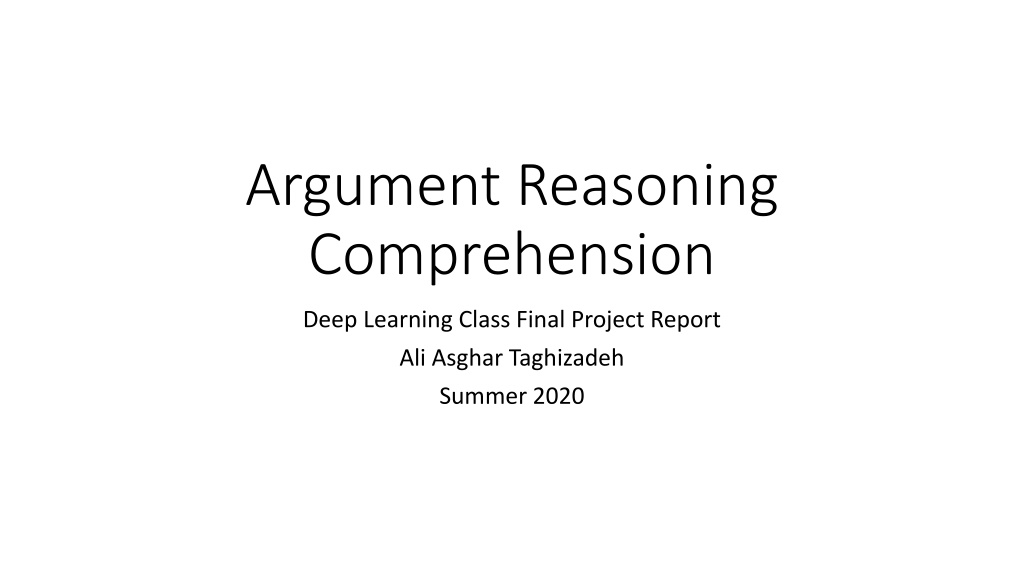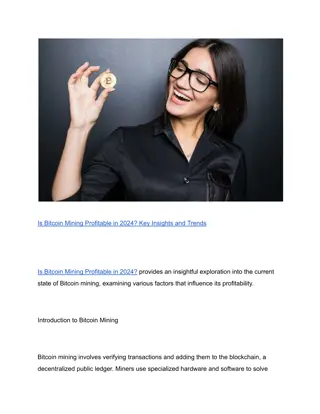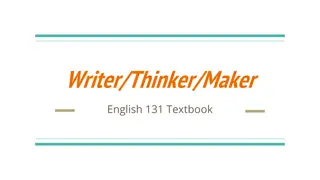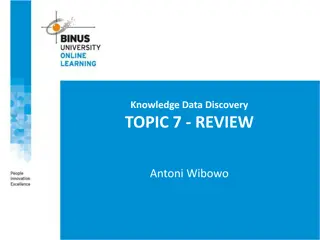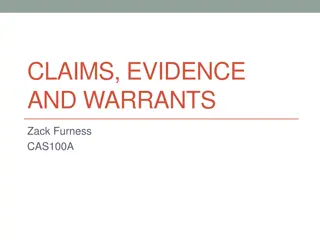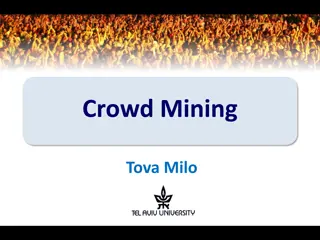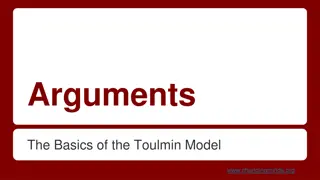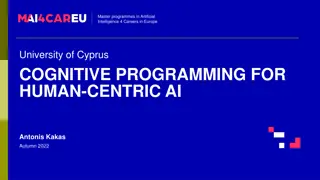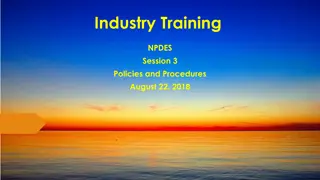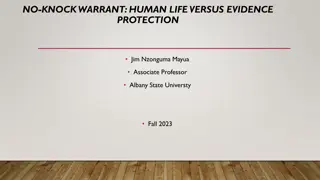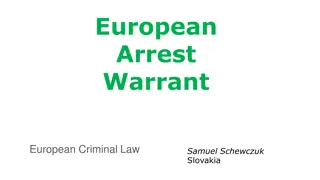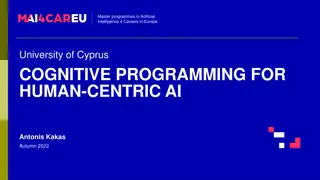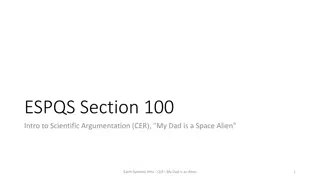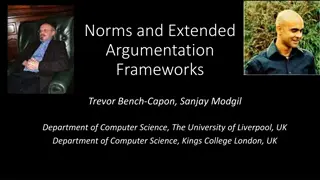Understanding Argumentation Mining in AI: A Deep Dive into Reasoning and Warrants
Delve into the realms of AI reasoning and argumentation mining, exploring the concepts of building models for logical decisions and extracting argumentative elements from text. Discover the significance of warrants in constructing compelling arguments within AI systems.
Download Presentation

Please find below an Image/Link to download the presentation.
The content on the website is provided AS IS for your information and personal use only. It may not be sold, licensed, or shared on other websites without obtaining consent from the author. Download presentation by click this link. If you encounter any issues during the download, it is possible that the publisher has removed the file from their server.
E N D
Presentation Transcript
Argument Reasoning Comprehension Deep Learning Class Final Project Report Ali Asghar Taghizadeh Summer 2020
Outline Problem definition Related works Proposed method Results Future works
What does reasoning mean in AI? Building AI models that are able to perform decisions that are somehow related to logical relations between inputs. Example: Richardson, K., Hu, H., Moss, L. S., & Sabharwal, A. (2019). Probing Natural Language Inference Models through Semantic Fragments. http://arxiv.org/abs/1909.07521
What is Argumentation Mining Building AI models to deal with finding argumentative parts of a piece of text, classifying them ,relation between them, scoring it . Lytos, A., Lagkas, T., Sarigiannidis, P., & Bontcheva, K. (2019). The evolution of argumentation mining: From models to social media and emerging tools. Information Processing and Management, 56(6), 102055. https://doi.org/10.1016/j.ipm.2019.102055
Warrants are invisible As a component of arguments warrants are not specified in utterance. e.g: It is raning; You should take a umbrella. => It s bad to get wet. warrant
Our task: Determine the right warrant, given the claim and reason for the topic being talked. Example: Training# Development# Test# 1210 316 444 Clark, P., Tafjord, O., & Richardson, K. (2020). Transformers as Soft Reasoners over Language. Figure 2. http://arxiv.org/abs/2002.05867
Related Tasks The task of Natural Language Inference Is very related to this task. Richardson, K., Hu, H., Moss, L. S., & Sabharwal, A. (2019). Probing Natural Language Inference Models through Semantic Fragments. http://arxiv.org/abs/1909.07521
Previous Works Choi, et al. used a method previously proposed for NLI task (ESIM) and used NLI datasets to transfer knowledge from NLI tasks. Botschen et al. used Knowledge Graphs to enhance the features. Niven et al. Models based on Bert achieved state of the art results (73% acc on test set)
Challenge dataset A new trend recently If we change the claim to it s opposite, will the model choose the alternative warrant? Bert performance fell from near human performance to essentially random.
Proposed solutions If it s a challenge related to negation impact may the datasets used for logic learning be helpful. If it s due to lack of information we should use knowledge graphs.
Learning Logic Transformers as Soft Reasoners over Language Probing Natural Language Inference Models through Semantic Fragments
My experiments On original task (acc): distilbert bert SOTA (bert) 73% 65% 73% On challenged task (acc): distilbert bert SOTA(bert) 55% 49% 53% (max) On challenged task with logic fine tuning (acc): distilbert 50%
Inoculation by fine tuning Liu, N. F., Schwartz, R., & Smith, N. A. (2019). Inoculation by fine-tuning: A method for analyzing challenge datasets. NAACL HLT 2019 - 2019 Conference of the North American Chapter of the Association for Computational Linguistics: Human Language Technologies - Proceedings of the Conference, 1, 2171 2179. https://doi.org/10.18653/v1/n19-1225
Using knowledge graphs KnowBert Peters, M. E., Neumann, M., Logan, R. L., Schwartz, R., Joshi, V., Singh, S., & Smith, N. A. (2020). Knowledge enhanced contextual word representations. EMNLP-IJCNLP 2019 - 2019 Conference on Empirical Methods in Natural Language Processing and 9th International Joint Conference on Natural Language Processing, Proceedings of the Conference, AdapterBert Wang, R., Tang, D., Duan, N., Wei, Z., Huang, X., ji, J., Cao, G., Jiang, D., & Zhou, M. (2020). K-Adapter: Infusing Knowledge into Pre-Trained Models with Adapters. http://arxiv.org/abs/2002.01808
Results with Knowledge graph I have used knowbert for feature extraction only Distilbert (acc) 50%
Refrences Choi, H., & Lee, H. (2018). GIST at SemEval-2018 Task 12 : A network transferring inference knowledge to Argument Reasoning Comprehension task. 773 777. Clark, P., Tafjord, O., & Richardson, K. (2020). Transformers as Soft Reasoners over Language. Figure 2. http://arxiv.org/abs/2002.05867 Habernal, I., Wachsmuth, H., Gurevych, I., & Stein, B. (2018). The Argument Reasoning Comprehension Task: Identification and Reconstruction of Implicit Warrants. 1930 1940. https://doi.org/10.18653/v1/n18-1175 Liu, N. F., Schwartz, R., & Smith, N. A. (2019). Inoculation by fine-tuning: A method for analyzing challenge datasets. NAACL HLT 2019 - 2019 Conference of the North American Chapter of the Association for Computational Linguistics: Human Language Technologies - Proceedings of the Conference, 1, 2171 2179. https://doi.org/10.18653/v1/n19-1225
Refrences Lytos, A., Lagkas, T., Sarigiannidis, P., & Bontcheva, K. (2019). The evolution of argumentation mining: From models to social media and emerging tools. Information Processing and Management, 56(6), 102055. https://doi.org/10.1016/j.ipm.2019.102055 Niven, T., & Kao, H.-Y. (2019). Probing Neural Network Comprehension of Natural Language Arguments. Table 1, 4658 4664. https://doi.org/10.18653/v1/p19-1459 Peters, M. E., Neumann, M., Logan, R. L., Schwartz, R., Joshi, V., Singh, S., & Smith, N. A. (2020). Knowledge enhanced contextual word representations. EMNLP-IJCNLP 2019 - 2019 Conference on Empirical Methods in Natural Language Processing and 9th International Joint Conference on Natural Language Processing, Proceedings of the Conference, 43 54. https://doi.org/10.18653/v1/d19-1005 Richardson, K., Hu, H., Moss, L. S., & Sabharwal, A. (2019). Probing Natural Language Inference Models through Semantic Fragments. http://arxiv.org/abs/1909.07521 Wang, R., Tang, D., Duan, N., Wei, Z., Huang, X., ji, J., Cao, G., Jiang, D., & Zhou, M. (2020). K-Adapter: Infusing Knowledge into Pre-Trained Models with Adapters. http://arxiv.org/abs/2002.01808
Used libraries and repositories https://huggingface.co/ https://github.com/allenai/kb
